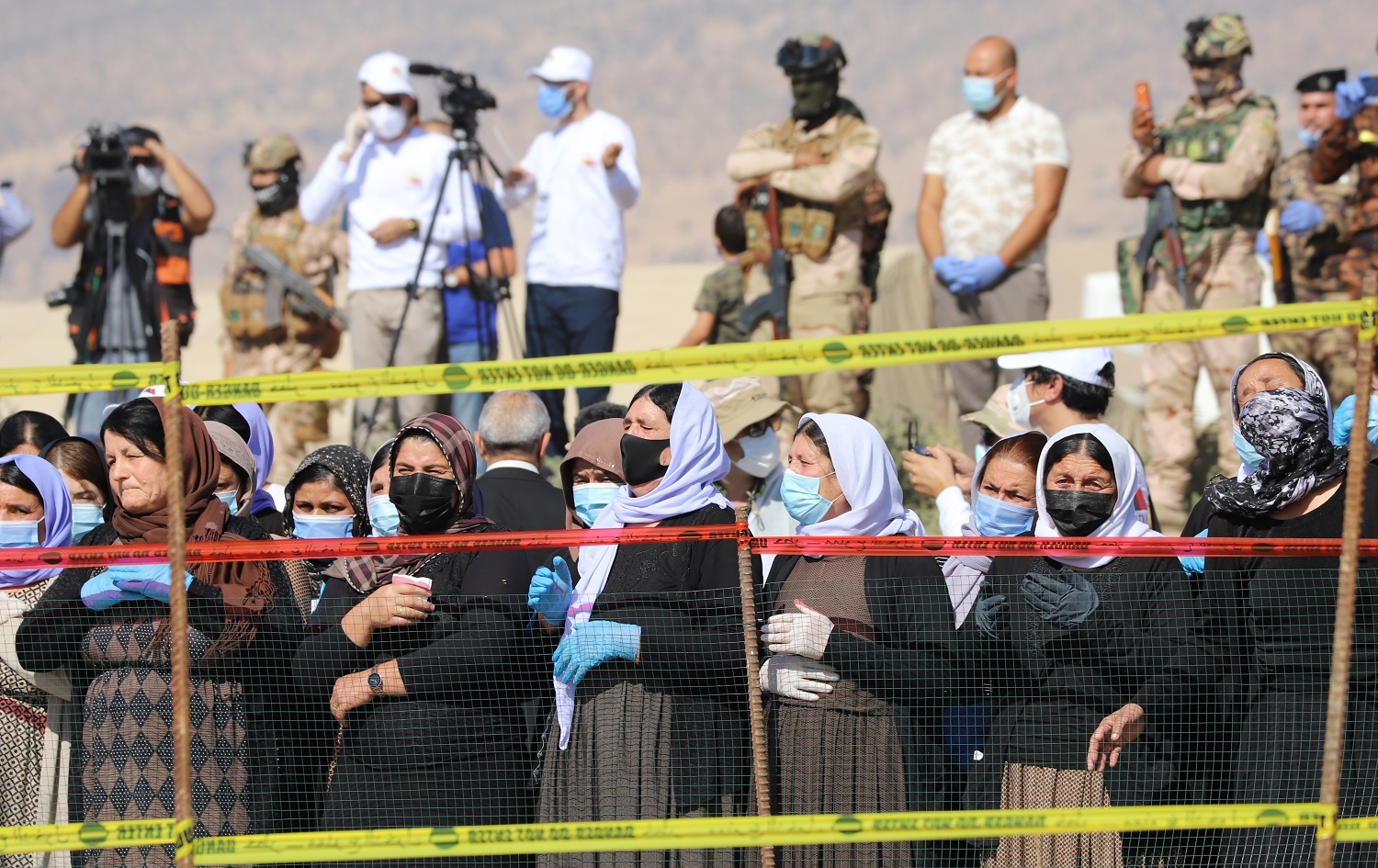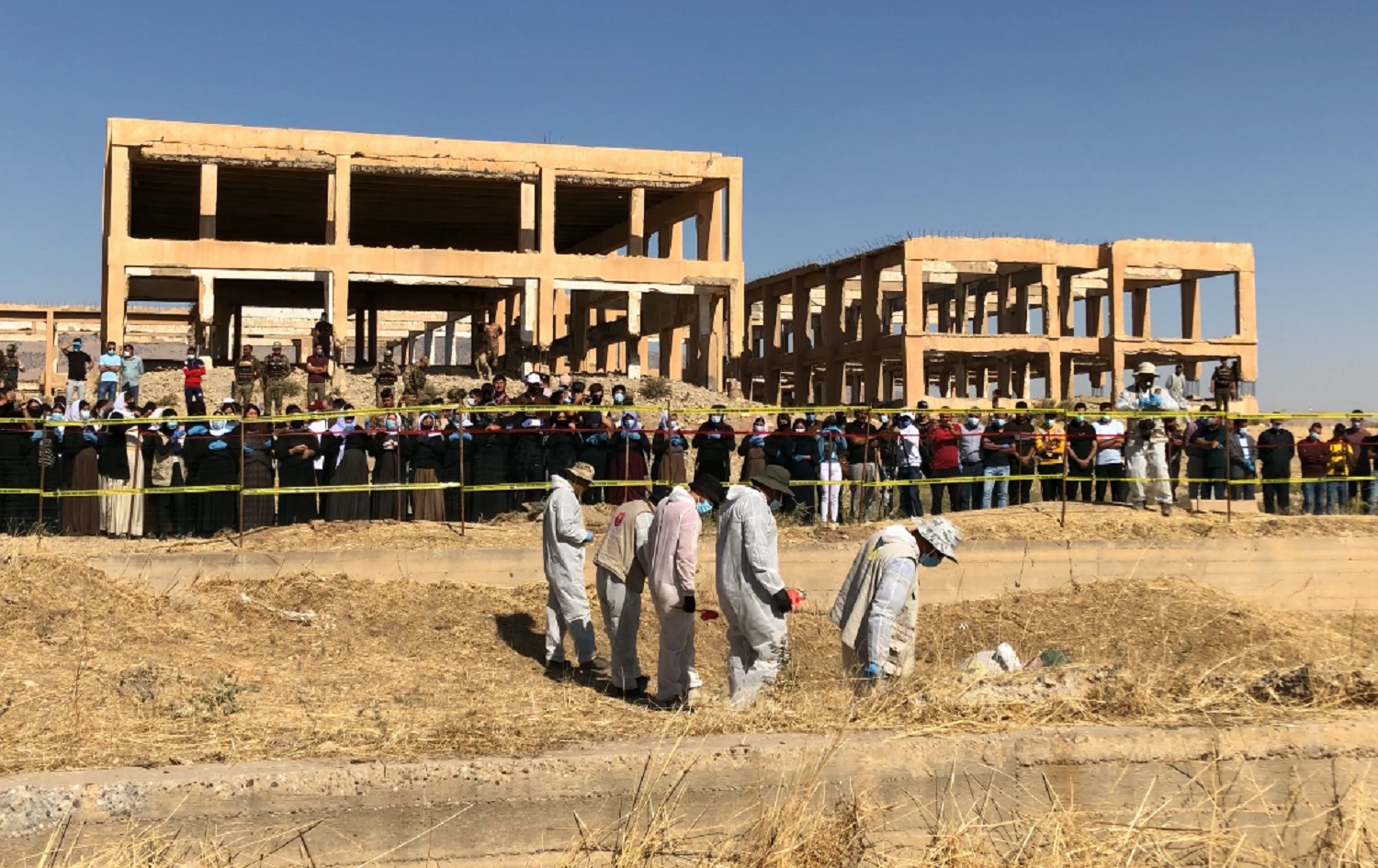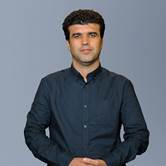SHINGAL, Iraq — Yousif yearns for a simpler time, one spent as a teenager chasing birds through the prairies that lie in the shadow of the mighty Mount Shingal (Sinjar).
Now 65, Yousif is a man hardened by life experience. He knows all too well of the exceptional darkness that came with the Baath regime of the recent past, but that era came with a modicum of certainty, he says. There was one oppressor, and everyone in Iraq knew his modus operandi; he was, at the very least, predictable. His close-knit community has withstood centuries of adversity and oppression, but nothing could have prepared them for the violent chaos that the arrival of the Islamic State (ISIS) would bring.
Yousif lives in his birth village of Qena, south of Mount Shingal, where several mass graves lurk beneath the soil. He fears a knock on the door from any one of the multitude of armed groups present in the area, unpredictable and accountable to no one – a knock that could end Yousif’s dream of working the land once again, of seeing his family prosper. In an area where opportunity is scarce, hundreds, if not thousands of Yazidis have joined militias and armed forces of all stripes, lured by the promise of financial security.
Yazidis have always been at the mercy of Muslim neighbors who consider them devil worshippers. There have been at least 74 attempts to wipe them off the face of the earth. What virtually all members of the ethnoreligious group want is to be left alone in their ancestral homeland, to practice their religion and culture in peace.
Like other Yazidis displaced by the violence wreaked by ISIS from 2014 onwards, Yousif and his large family lived a wretched existence in an IDP camp near Duhok for three years, before they moved back to Shingal in September 2017. Yousif’s own brother was disappeared into oblivion by the thugs of ISIS. His brother’s family, however, were spared in return for a lump sum payment to the Caliphate that ISIS had proclaimed in nearby Mosul. Despite the hardship he has endured, Yousif is upbeat. “Life is good here, it's better than the camp,” Yousif told Rudaw English on October 24, the day two mass graves were expected to be unearthed. “We aren’t involved in politics. We rely on Sattar [the creator].” Beside him are three of his sons, each of whom attend to one of three consecutive storefronts; a liquor store, a shop selling cooking gas cylinders, and a garage. Though they reside in an area overrun by unruly militias, they are still able to make a living. “As long as they don’t violate us, they are welcome here,” Yousif says.
As he speaks, dozens of vehicles speed past the parade of shops, heading to a spot south of Qena where a few hundred expectant Yazidis have gathered. Their number is almost matched by the security force and militia members that surround them. There are several dozen each of Iraqi army soldiers, federal police, and Popular Mobilisation Forces (Hashd al-Shaabi) fighters. Half a dozen armed western security guards carrying M4 automatic rifles keep a watchful eye on a team from the United Nations Investigative Team to Promote Accountability for Crimes Committed by Da’esh (ISIS), or UNITAD.
Two Soviet-era helicopters hover overhead, while American-built Humvees surround the crowd. An area the size of a tennis court had been cordoned off. Just beneath the surface are the bones and clothes of over 80 Yazidi women and girls dumped unceremoniously by their killers, awaiting exhumation and a dignified burial. The forensic team lie in wait to collect evidence to hold the ISIS criminals to account. The mass grave in Solagh is just one of tens of thousands worldwide. In northern and western Iraq alone are at least 202 documented mass graves, UNAMI and the Office of the United Nations High Commissioner for Human Rights (OHCHR) estimated in 2018, and they conceded that there exist many more mass burial sites that have yet to be identified.

More recently, Special Rapporteur for the UN Human Rights Council on extrajudicial, summary or arbitrary execution Agnes Callamard said that she “notes mass graves’ importance as sites for memorialization of those lost to grave crimes but also in the larger project of preservation and articulation of 'victim-centred', rather than only 'victor-dominated', accounts of history.” She urged that states “develop legal frameworks governing the management of mass graves, including their identification, preservation and investigation over time and for future generations.”
Though teary eyes were fixed on the burial site, the irony of such strong attendance would not have been lost on the Yazidi women and men. Back in the scorching heat of the summer of 2014, as the Yazidis were paraded, kicked, beaten, enslaved, gunned down, buried alive by Islamic State militants, there was no sign of any army to defend them. On the ground, all but a dozen peshmerga fighters defying the orders of their superiors had fled, abandoning the Yazidis to their fate. The sky was empty of the aerial salvation that could have halted the march of women by ISIS to Solagh’s future mass grave. Among those to be slain was the elderly mother of Nadia Murad, a young Yazidi woman who would become the outspoken ambassador of her community.
Around five thousand women and young girls were abducted by Islamic State held captive for years, forced into sexual slavery. Some survived, freed in return for cash; others found freedom when Kurdish-led forces in northeast Syria put an end to the dark reign of Abu Bakr al-Baghdadi, the group’s caliph. Tens of thousands of Iraqi soldiers, federal police officers, and peshmerga fighters abandoned the Yazidis to the mercy of the jihadists, who had come from all over the world to raise the flag of the Caliphate. Many would later claim to have been the liberators of the Yazidis, but at the time there were no witnesses, no defenders as women and girls were led to captivity and to death. Even the ubiquitous bird of Sinjar, the crested lark, must have flown away to avoid witnessing such horror.
Instead, forensic science is teaching us of what the slain Yazidis were subjected to. “Some of the victims were blindfolded, some were found with their hands tied, others were shot,” Sirwan Jalal, an official with the Kurdistan Regional Government (KRG) mass grave directorate, whose team was partly responsible for exhumation at Solagh, said of the findings made at unearthed mass grave sites. “Some remains were unscathed; it appeared as though they were suffocated under the soil. Some had IDs on them.” Jalal says that the youngest victim he has seen so far appeared to be of no more than nine years of age.

Speeches from UNITAD, Baghdad and Yazidi community officials launched the exhumation ceremony. “The soil of Iraq is littered with sites where civilians were massacred by Daesh,” Karim Khan, the head of UNITAD said, before offering some semblance of reassurance to a community at the site of the grave of mothers. “You must remember that the crimes Daesh committed will not be forgotten and, I want you to believe me, that these are not only words... We need determination and resilience to get what you deserve, justice.”
As the exhumation begins, the sobs of a young, light-skinned woman shrouded in brown ring through the air. Lina Ameen, now 29, was abducted by ISIS in 2014, held captive for two months and released in return for a large sum of money. Sixty members of her extended family were wiped out by ISIS, including her father and one of her brothers, both found in a mass grave in Kocho alongside over 230 others.
Lina was resettled in Germany three years ago, as part of a UN Migration Agency (IOM) scheme that saw at least 1,100 Yazidis resettled in the country in 2015 and 2016 alone, but she’s returned to her hometown to witness the exhumation. She now sits in the dust of Sinjar as the forensic team searches for remains, planting a pole with a red flag into the ground every time they spot a piece of cloth. The women release a collective shriek, and some whirl in place like dervishes. Lina cries next to a weeping elderly woman who sat in a chair best positioned to view the operation pan out in front of her.
The delay in identifying the remains of mass graves, reportedly because of the coronavirus pandemic, have angered the community – not least Lina. “As long as the remains of our relatives are under the ground in a mass grave, our pain resurfaces again and again... Peoples’ relatives die once, but ours die every day as we come to collect their remains,” Lina says. “We want them [UNITAD and others] to exhume them as soon as possible, and take them for forensic testing.”
A few kilometers from Solagh is the village of Kocho, the birthplace of Nadia Murad, where another mass grave awaited exhumation. The massacre that took place near Kocho’s village school was notorious, even by ISIS standards. Here the exhumation process is almost over, and a cemetery has been prepared for those who have been identified by the mass grave directorate through DNA testing. Each grave is still hollow, carrying the name of a victim but no remains.
A commemorative exhibition is on display at the village school. Yazidis, UN staff, and Iraqi officials mingle as they stare at the faces of those who were killed by ISIS. Haje Malham Hamad, in his mid-50s, stands guarded at a corner of the exhibition. An N-95 mask covers his lower face, but he looks poised to speak. “This is my own family,” says Haje, gloved hands touching 11 portraits of relatives killed in the Kocho massacre.
Haje follows Karim Khan and the Iraqi officials wandering on tour of the school exhibition. He is the only visibly Yazidi person following the group of officials, as Iraqi army soldiers keep guard. Though he moves quietly, his red and white checkered turban ensures he stands out from a sea of military berets and fatigues. He follows in continued quiet as the crowd works their way towards an exit, towards dozens of Iraqi military vehicles and an armored UN vehicle parked near the graveyard. Without a word, he watches as the officials hop into their cars to be driven off, leaving Mount Shingal to shrink in their rear-view mirror.
Like Lina, Haje is extremely concerned about the delay in identifying the victims through their DNA. “We want to be able to bury our relatives,” he says in a voice hushed by his mask.
As Turkey continues its attacks on the Sinjar Resistance Units (YBS), a Yezidi militia affiliated with the Kurdistan Workers' Party (PKK), several other militia groups in Shingal tussle over power. Six years after the genocide, anxieties over the community’s future continue to brew. Shingal’s Yazidis fear Arab Sunnis living in neighbouring villages, some of whom allegedly helped ISIS in its killing spree. A recent murder of an Arab from the Shamar tribe in the town of Sinjar, allegedly at the hands of Yazidis, has put the community on alert. “Honestly, we are still scared of Arabs,“ Yousif says.
The recent agreement between Baghdad and Erbil to administer the Shingal region has given hope to some locals that security may finally be restored. But other Yazidis who are supporters of the YBS are angered. And for Yousif and 20 other families to be able to resettle in their home village, they need the government to support the restoration of infrastructure, and employment opportunities that do not mean joining a militia.
But like the KRG, the central government is reeling from low oil prices and the economic impact of the pandemic that has made it difficult to pay the salaries of millions of civil servants. “There are no salaries,” Yousif says while sipping tea outside the parade of shops in Qena, a morsel of commentary that could have been offered from anywhere in Iraq.
Editing by Shahla Omar









Comments
Rudaw moderates all comments submitted on our website. We welcome comments which are relevant to the article and encourage further discussion about the issues that matter to you. We also welcome constructive criticism about Rudaw.
To be approved for publication, however, your comments must meet our community guidelines.
We will not tolerate the following: profanity, threats, personal attacks, vulgarity, abuse (such as sexism, racism, homophobia or xenophobia), or commercial or personal promotion.
Comments that do not meet our guidelines will be rejected. Comments are not edited – they are either approved or rejected.
Post a comment